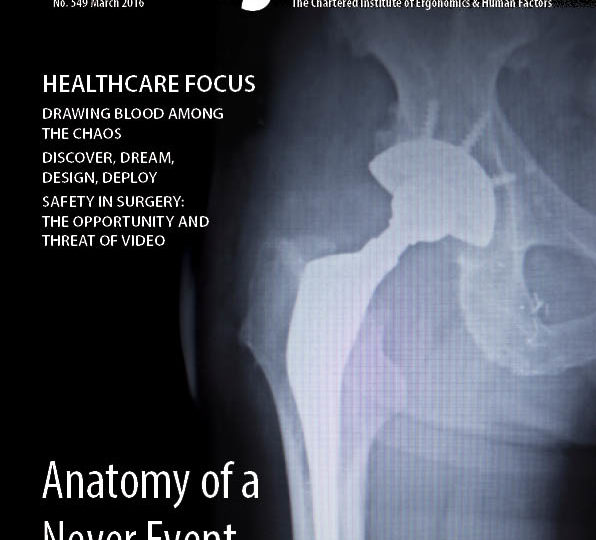In the UK, one in 20,000 healthcare procedure results in a Never Event, a serious incident that should be wholly preventable. Rigorous investigation and effective barriers could help to bring this number down, but it appears something much more fundamental is the issue, as Ethel Oldfield explains.
—————-
The World Health Organisation estimate that there are 234 million operations carried out annually across the world. In the UK alone, there are 10.1 million operations carried out each year. Of these, it is reported that there is on average, one Never Event per 20,000 procedures, which includes interventional radiological and cardiac catheter procedures. Whilst this is not a large number, it is one too many. Guidance or safety recommendations that provide strong systemic protective barriers against such events are available at a national level and should be implemented by all healthcare providers.
There are currently 13 defined Never Events in the UK. Each Never Event type has the potential to cause serious patient harm or death, but this doesn’t have to happen for an incident to be categorised as a Never Event.
Never Events include incidents such as wrong site surgery, a foreign object retained post procedure, or a wrong route administration of medication. The list of Never Events is reviewed annually and does change, so it can be difficult to undertake comparisons, but data on Never Events is monitored closely. There does not appear to be an increase in the number of Never Events reported nationally by the NHS, despite the fact that the organisation is much more open and transparent than it has ever been.
There is much media hype regarding Never Events, often negative, and for staff involved in such an event, can be very worrying and make individuals feel even worse as there are very few incidents whereby an individual sets out to cause harm.
Contributory and causal factors of incidents in the NHS are generally regarded as multifactorial as they occur in a complex sociotechnical system, with multiple staff members, several teams and sometimes more than one organisation in an often highly pressured, financially difficult environment. The patient too is completely unique and each will have different medical needs, respond differently to treatments, may speak a different language and may even have unusual anatomy.
The process of a patient receiving a surgery or procedure can be lengthy, with input from a number of professionals, staff and organisations. Many healthcare incidents are the result of a typical ‘swiss cheese’ model whereby the barriers are in place but the holes still line up and an incident occurs. From a human factors perspective, there are many potential causes that can lead to a Never Event.
Checking consent
All patients should be involved in the decisions regarding their care: “nothing about me, without me”. UK law requires that valid consent is gained from an individual prior to them receiving any care or treatment. In order for an individual to give their consent, they must be provided with information on their care and treatment that’s easily understood, accurate and truthful, and includes risks and benefits of the procedure.
Consent requires time, patience and clarity of explanation. Consent for an elective procedure should be a two-stage process, that is, it should be carried out prior to surgery, with the patient given information regarding their procedure to take away, read and if necessary, contact the surgeon with any questions. It should be revisited again on the day of surgery to confirm the patient’s understanding of the risks and benefits and to answer any questions they may have. The surgeon should then sign the consent form again confirming the conversation. This may involve the use of an interpreting service if there is a language barrier, adding another layer of complexity – getting an interpreter, a patient and a professional together, at the same time, in the same room can be a difficult undertaking. In addition to completing the consent form, recording in writing the details of the consent discussion with the patient requires time, both at the end of the clinic and prior to the surgery.
The WHO Surgical Safety Checklist includes a section to confirm the surgery site and location with all the staff present for the surgery and with the patient. Safety checklists are only effective if carried out in the way they were intended, with all participants playing an active part. Theatres are complex places with multiple professionals often having a limited slot in which they have the theatre space and a team. Surgeries can become complicated, increasing stress and causing delays. Embedding and correctly using an effective safety checklist is key to ensuring the patient and the staff are kept safe.
Findings of investigations are often focused on obvious, physical causes, such as paperwork not being completed correctly or a procedure not being carried out. Rarely, however, do we look at the culture. Hierarchy in healthcare is part of everyday life and it’s often the case that the most senior person leads, regardless if they are the right person to lead or not.
For further opinion from Ethel, please subscribe to The Ergonomist for the full article.
Ethel is Clinical Lead for Risk & Governance in the NHS. She is a Registered Midwife and has just completed a postgraduate qualification in Human Factors in Patient Safety at Loughborough University.



